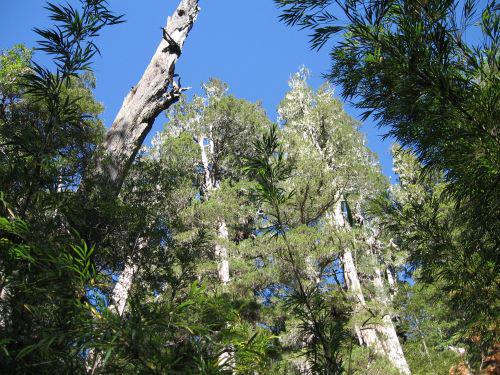Gabriela Juri
The main objective of this work is to analyse tree decay due to drought in distinct forests of southern Argentina. We will identify sensitive and resistant trees in forests recently affected by extreme drought. We will study individual-level tree growth patterns using wood cores. We will evaluate the adaptive value of different provenances through common garden and water stress experiments. Trough GBS techniques we will find genotypes adapted to resist drought conditions. We will identify and map vulnerable populations prone to be affected by future climate conditions (drought and heat) with species distribution models (SDMs).
We will organize workshops with local stakeholders and local conservation authorities to increase awareness on the effects of climate change on local forests and to provide scientifically based information to apply to climate-adjusted restoration, promote the in situ protection of areas towards the eastern (driest) distribution margin which are currently outside protected areas.

F. cuprssoides growing in Parque Nacional Los Alerces, Chubut, Argentina. © María Laura Suarez.
As a result of global climate change, signs of massive tree mortality and forest dieback were detected in many forested regions of the world. These were caused by the increase in frequency and severity of extreme weather conditions, such as droughts and heat waves. During the past decades, this phenomenon started to show its effects in southern temperate forests of Chile and Argentina were intense summer droughts are becoming more frequent.

Fitzroya cupressoides individuals growing in Paso de Las Nubes, Rio Negro, Argentina. © María Laura Suarez.
The main objective of this work is to analyse tree decay due to drought in distinct forests of southern Argentina. We will identify sensitive and resistant trees in forests recently affected by extreme drought. We will study individual-level tree growth patterns using wood cores. We will evaluate the adaptive value of different provenances through common garden and water stress experiments. Trough GBS techniques we will find genotypes adapted to resist drought conditions. We will identify and map vulnerable populations prone to be affected by future climate conditions (drought and heat) with species distribution models (SDMs).
We will organize workshops with local stakeholders and local conservation authorities to increase awareness on the effects of climate change on local forests and to provide scientifically based information to apply to climate-adjusted restoration, promote the in situ protection of areas towards the eastern (driest) distribution margin which are currently outside protected areas.